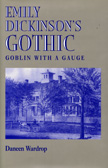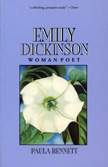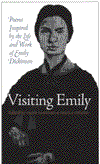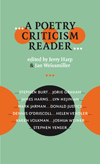Emily Dickinson's Gothic
“Emily Dickinson's Gothic is one of the most acute critical studies of Emily Dickinson that I have read. Wardrop illuminates the 'gothic' sensibility that Dickinson both exploits and undercuts. A new perspective thus is developed for reading Dickinson, a perspective that (happily) was one of Dickinson's own devisings.”—Harold Bloom, Yale University
“Wardrop is the first [critic] to provide a sustained and systematic study of the poet's gothicism. She is also the first to claim that Dickinson is 'our preeminent gothic poet.' …interested mainly in 'female gothic'—that is, in 'a tradition of women writing literatures of hesitation primarily for women readers'—Wardrop closely examines the 'haunted' content and 'spectre saturated' language of Dickinson's poetry, particularly recurring images of the goblin, whose gothic presence, she maintains, critiques the entrapment of the poet as woman.“—Choice
Emily Dickinson should stand as a major gothic author among her nineteenth-century American contemporaries, but two factors have previously prevented her inclusion in such company. Perhaps the most obvious is the problem of the genre: Dickinson writes gothic poetry, whereas gothic fiction defines the genre. In addition, her poetic personae have served over the decades to prompt critics to “protect” her; traditional critics concentrated on the sweet, romantic elements of her oeuvre. More recent readers, notably Sandra Gilbert and Susan Gubar, Jane Egerwein, and Cynthia Griffin Wolff, have begun studying Dickinson's gothic traits; Emily Dickinson's Gothic explores Dickinsonian gothicism with the systematic rigor it demands and deserves.
Emily Dickinson's Gothic also addresses sociohistorical concerns, from hallowed gothic conventions dating from Horace Walpole's eighteenth century to such modernist neogothic topics as rape, the void, and disjunctive language that appear in the latter nineteenth and early twentieth centuries. Wardrop recognizes the full extent to which the gothic pervades Dickinson's canon and the means by which the gothic determines her aesthetic. Such full consideration of women's gothicism allows the placement of Dickinson within a literary context, both in terms of American writers and in terms of women writers.






